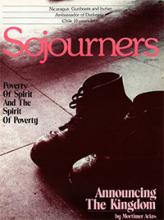Preparing to board a bus for the nine-hour trip to the Nicaragua-Honduras border, I suddenly realized that I was traveling with a unique and special group. I reflected that each of these 150 people must have said to themselves at some point, "I'm going into a war zone; I might not come back; I have to be ready to die." But they came anyway. That seemed re markable, especially for a group of mostly middle-class North Americans.
Read the Full Article

Already a subscriber? Login
